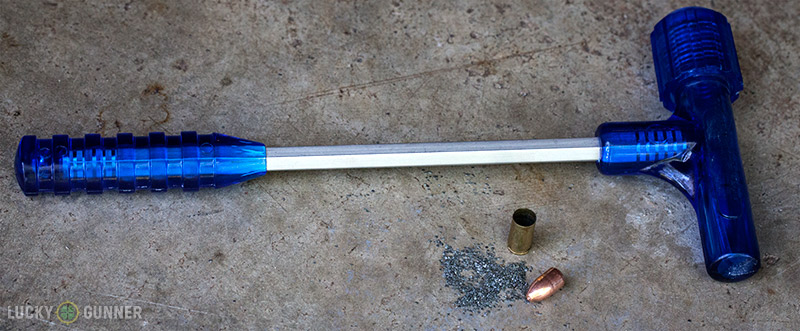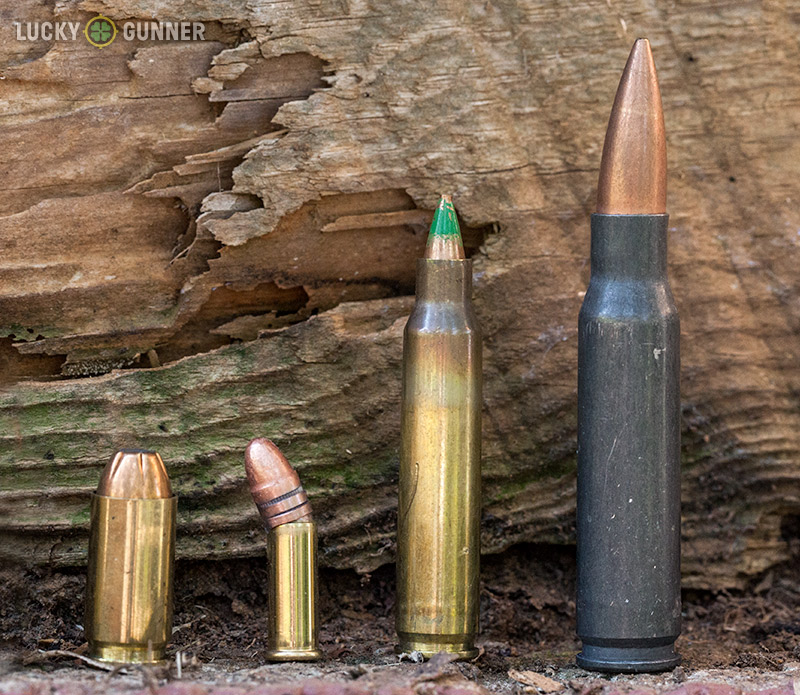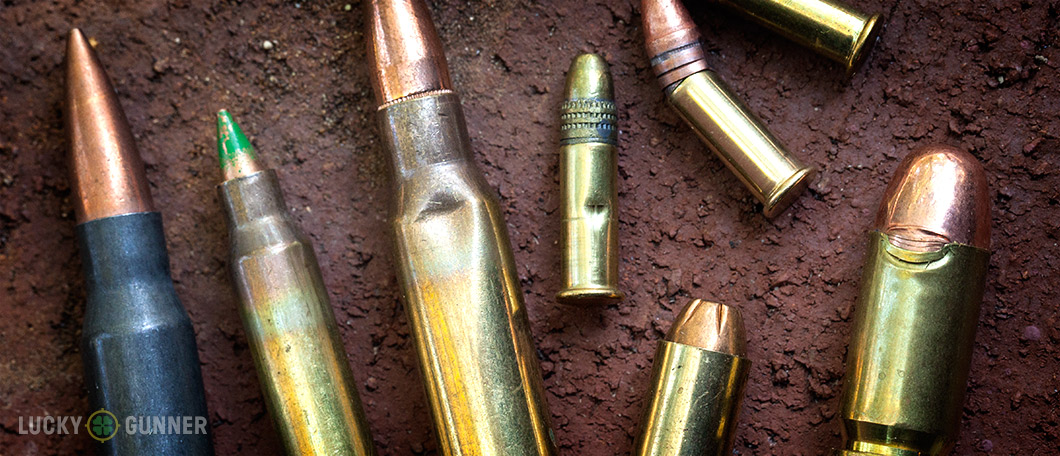Whether it’s a bad primer in a brand new factory round or a case of corroded milsurp rifle ammo, at some point you’re going to have to deal with the issue of what to do with ammunition that’s faulty or not fit to shoot.
For several years now, I’ve been tossing my ruined ammo into a small box in my garage. The box contains cartridges I’ve accidentally mangled on the reloading press, ammo that was damaged in shipping, cartridges with dramatically recessed bullets caused by feeding malfunctions, rounds with cases so badly dented they won’t even chamber, and of course a plethora of rounds that just wouldn’t go “bang”, especially 22’s.
Similar to my little box of failures, a lot of shooting ranges have a bucket somewhere in the corner for shooters to dump their stray dud rounds. But what if you don’t have a handy reject ammo disposal receptacle where you shoot? This question seems to come up occasionally among shooters, and there doesn’t appear to be any real consensus for the answer.

No matter what the correct procedure actually is, it should probably go without saying that disposing of ammo improperly can be dangerous. The primer may not have ignited when you pulled the trigger but that doesn’t mean it can’t still go off under the right circumstances (like, for instance, when the garbage man activates the compactor on his truck). Furthermore, most ammo contains lead, which isn’t something you want to be too casual about tossing out with your household garbage, and doing so might even be illegal depending on where you live.
The best method for getting rid of your old ammo will depend on a couple of different factors. The quanitity of bad ammo you have makes a big difference. Ditching a handful of bad rimfire cartridges is much easier than figuring out what to do with a dozen ammo cans worth of .30-06 that you found out your grandad kept in a leaky storage shed. Your geographical location also has an effect on what options you have. The closer you live to a major metropolitan area, the more likely you are to have public facilities nearby that are equipped to handle ammo disposal. So let’s take a closer look at some of the most common ways to get rid of unwanted or unusable ammunition.
Do It Yourself
If you’ve just got a few rounds to get rid of, you might choose to take care of it yourself. We’re not necessarily endorsing any of these methods as the best option, but here are a few of the more popular suggestions:
Disassemble and Re-Use
Depending on what kind of condition your alleged bad ammo is in, some of the components might be salvageable. If you have any shooting buddies who are into hand loading their own ammo, they would probably be happy to get some free supplies in the form of your range rejects. Using an inexpensive kinetic bullet puller tool, it’s usually pretty easy to extract the bullet from the case of the offending cartridge. The primer or powder might not be worth much, but the bullet and case can most likely be re-used. Even ammo in the worst condition can be salvaged by someone with the equipment to melt and cast his own lead bullets.

Bury It
“Bury the ammo in your back yard” seems to be one of the most common solutions to the bad ammo disposal problem. I even heard it suggested by an NRA Training Counselor during an instructor class, though I’m fairly certain it doesn’t reflect the official position of the NRA proper.
Honestly, if we’re just talking about a few rounds, burying it is very unlikely to hurt anything unless your dog gets curious. But just like throwing it in the trash, it might be illegal in your area, and there’s a slight chance it could have some negative environmental impact. Lead does exist naturally in the ground, but not with the same concentration and level of purity as what’s found in our ammo. And what happens if the next person who moves into your home decides to plant some tomatoes on top of your ammo landfill? I’m no environmental scientist, but it doesn’t sound like a the best idea.
Disable It
Another common suggestion is to somehow render your bad ammo inert and then toss it in the trash. Setting aside the fact that you’d still be throwing out lead with the household garbage, this method of ammo disposal at least takes care of the explosion hazard, if successful. One popular method is soaking your ammo in water or motor oil for a couple of days so the powder and primer are ruined. There’s also the more thorough technique where you pull the bullet, dump the powder, and then spray the inside of the casing with WD-40 to kill the primer.
These sound like pretty good ideas at first, but I’ve got my doubts. Modern ammunition can be surprisingly resilient. Moisture, oil, or solvents can knock a cartridge out of commission for a while, but they can often be revived just by letting them air out a little. I wouldn’t count on a little bath in motor oil to render a box of ammo permanently harmless.
Call the Pros
So let’s say you’re either not up to the task of disposing of this stuff on your own, or you’ve got a much larger batch of bad ammo than the average range-goer. It’s time to call in a professional who can safely dispose of your ammo. There are a few different ways to go about this, and the options available to you will vary depending on where you live, but these disposal services are almost always free of charge.

Local Law Enforcement
The most likely source for someone who can take care of your ammo is your friendly neighborhood cops. Call your nearest police department or sheriff’s office and ask if they can take it off your hands. Some smaller departments might not be equipped for this, so be sure to call and ask before you show up with a pickup truck full of damaged ordnance. If your local PD has an explosives disposal unit, they may even use your ammo in a training exercise. Hey, your ammo might get to go boom after all! Bring some homemade cookies with your ammo and I bet they’ll even let you watch the fireworks (but don’t quote me on that).
Hazardous Waste Facility
Many local landfills or waste management programs have a hazardous waste drop-off somewhere in town. This is where you can take things like old batteries, used motor oil, and other household chemicals that are unsafe for the normal trash. Sometimes they will accept ammo, but that is often not the case. However, they should be able to offer you an alternative, which may be another municipal authority like the fire marshal. I called our local waste management facility and they said to take ammo to the police HQ instead.
Indoor Shooting Ranges
If you’re not dealing with a large quantity of unusable ammo, you might check in with your local indoor shooting range. They should already have a safe procedure in place for getting rid of bad ammo, and might be willing to take a few rounds off your hands (especially if you buy something first).
However you decide to get rid of the ammo you can’t use, be smart about it, and if you have any doubts, be sure to check your local and state laws.

